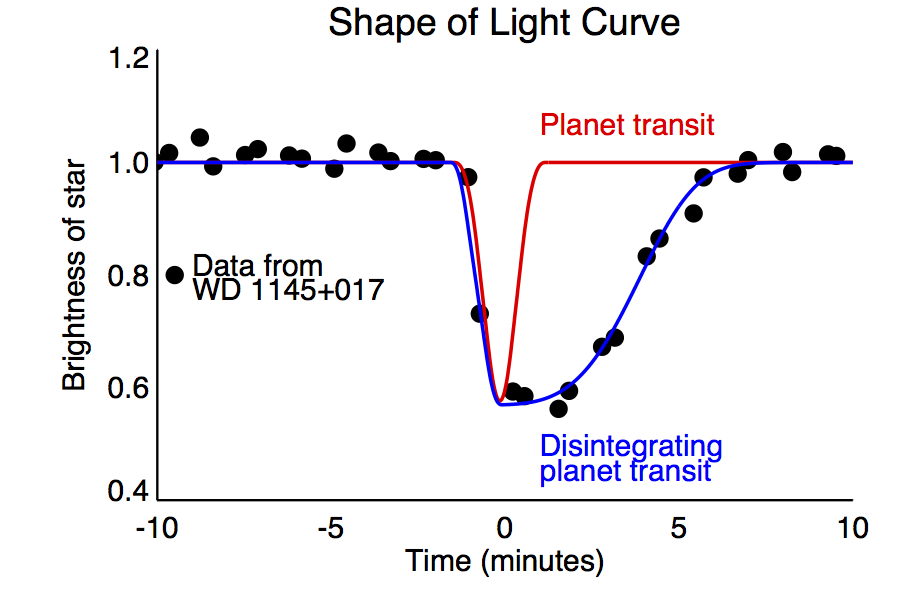Scientists saw a white dwarf eat its planet

During the K2 mission, the Kepler telescope discovered a process not previously observed by astronomers. The gravity of the white dwarf WD 1145 + 017 tears apart a rocky body rotating around it. This body, apparently, is the remnants of the planet. This discovery was told by astronomers from the Harvard-Smithsonian Center for Astrophysics.
“For the first time we are witnessing how a superstrong gravity breaks a small planet. Her pieces are then chopped by radiation and the resulting residues fall on a star, ”explains Andrew Vanderburg, a center graduate and lead author of the paper.
Stars with masses within certain limits gradually turn into red giants in the course of their lives. Those at some point drop the shell, and the remaining superdense core turns into what scientists call a white dwarf. The mass of such stars is comparable to the solar one, but their radius is less than the solar by two orders of magnitude, and luminosity - by 4 orders of magnitude. It is due to the low luminosity that it is difficult to estimate the total number of such stars in our galaxy - most likely, their number lies in the range from 3 to 10% of the stellar population.
The discharge of the shell leads to catastrophic consequences for the planetary system of the star. And if the star gains weight by absorbing the remaining substance, and overcomes the limit of Chandrasekhar(1.44 solar masses), it undergoes a gravitational collapse, observed as a type Ia supernova burst, and turns into a neutron star.
Astronomers have long predicted that some planets and large celestial bodies orbiting a star can survive this period and then serve as accretion material that feeds the star. Planetsimal (a small planet), making a complete revolution around WD 1145 + 017 in 4.5 hours, became the first object of this class, the existence of which was confirmed by observations of transit objects. The small period of its circulation indicates the extreme proximity of the planet to the star.

Schedule dimming stars. The red line is the transit of a typical planet. Blue - transit of our facility
Conclusions about the nature of the celestial body and its fragmentation were made on the basis of the study of the graph of the darkening of the star as the body passes through its disk. When a star is obscured by a transit body such as an ordinary planet, the dimming graph has a symmetrical V-shape. In this case, the asymmetry of the graph served as an argument in favor of the comet-like structure of the body - that is, a large asteroid (or small planet), followed by a tail of fragments.
Also confirming the theory is the fact that observations of this white dwarf established the “contamination” of its surface with relatively heavy elements. In white dwarfs, not burdened by asteroids and their attendant matter, the surface is chemically clean and consists exclusively of hydrogen and helium.
K2 mission - the Kepler telescope mission, launched in May 2014. The previous, initial mission of the apparatus ended abruptly and prematurely due to failure of the telescope's flywheel engines. Scientists figured out how an inoperable telescope could serve science - instead of the flywheel engine, the pressure of solar radiation is used as a stabilizing element in this mission.
